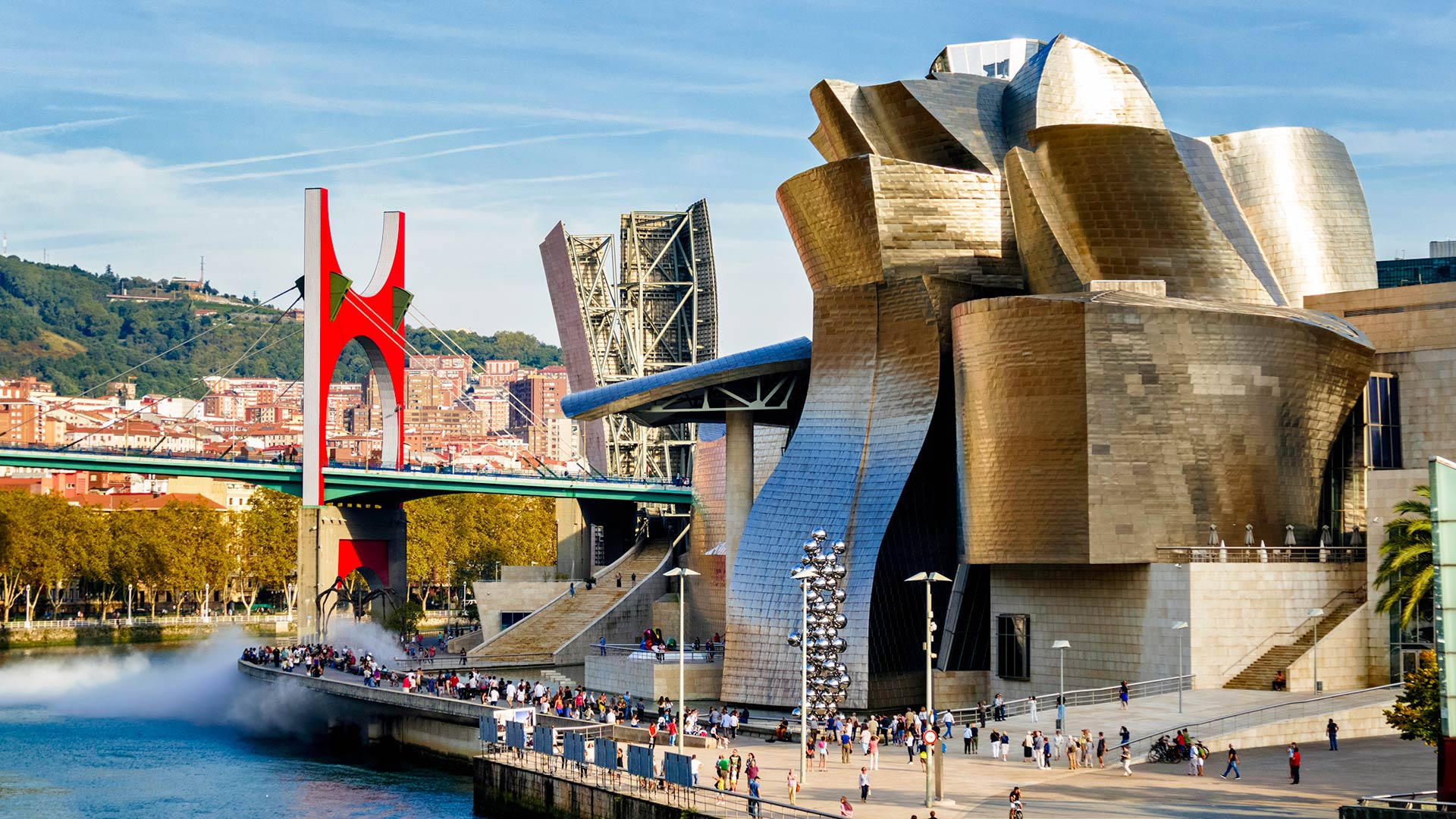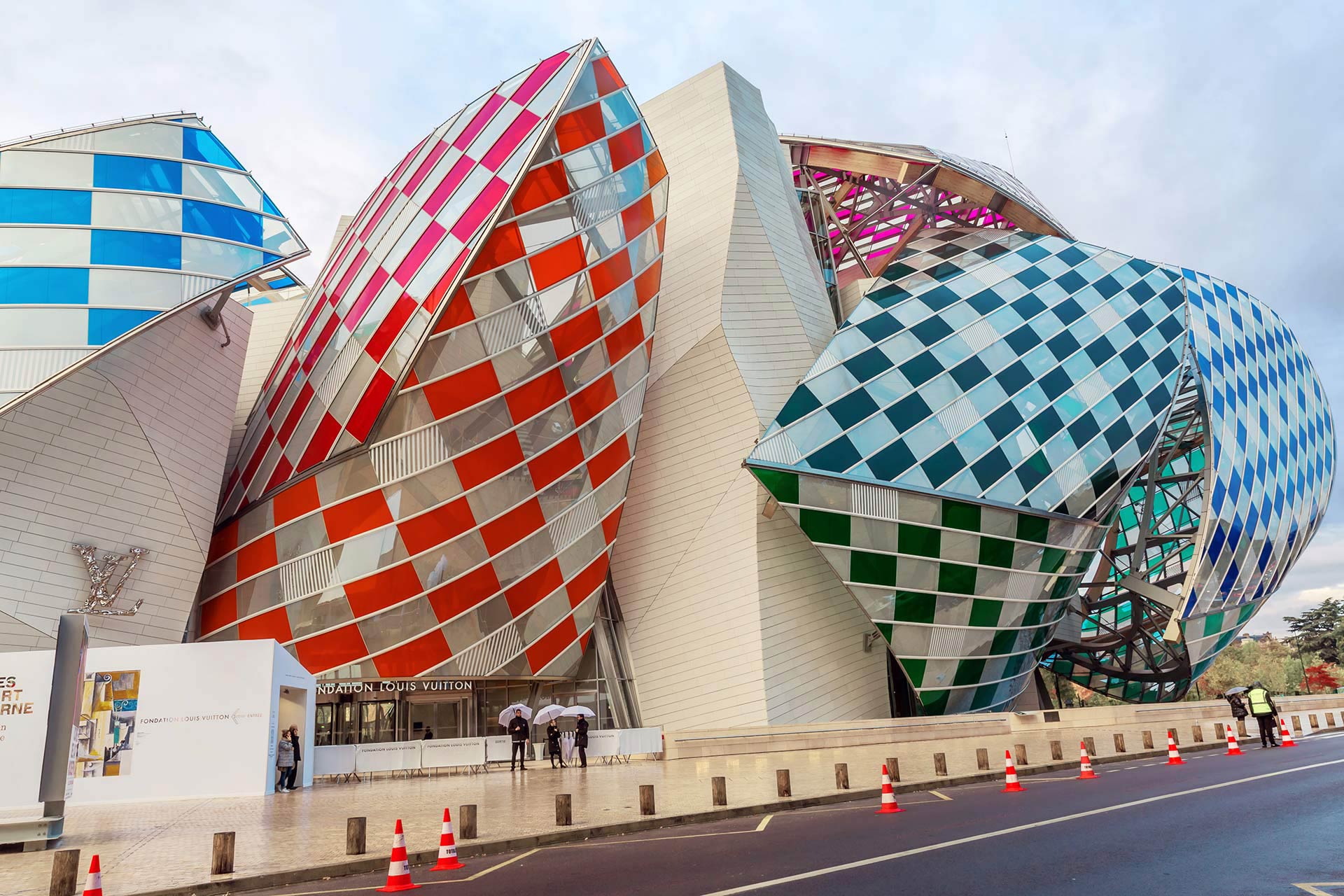
Tolucans may have noticed a vacancy in what was previously the Wells Fargo building at the corner of Mariota Avenue and Riverside Drive. Completed in 1982 and designed by 1989 Pritzker Prize recipient Frank Gehry to house a World Savings and Loan branch, this Toluca Lake landmark is a sibling structure to famous buildings like the Walt Disney Concert Hall in downtown L.A., the Guggenheim Museum in Bilbao and the Louis Vuitton Foundation in Paris. What these constructions share, besides a common architect, is a thread to the larger web of their style, deconstructivism.
Deconstructivism gained its traction in the 1970s, though it was popularized in 1982 by Bernard Tschumi’s submission to the Paris Parc de la Villette design competition and again by a MoMA exhibition in 1988, where Gehry’s work was exhibited among six other contemporaries, including Peter Eisenman, Zaha Hadid and Rem Koolhaas. From one source to the next, the movement’s relation to French philosopher Jacques Derrida’s “deconstruction” is contested. This is a theory on grammatology, or a scientific study of writing, in relation to political organization and social norms, not architecture. What is common is their dismantling of truth. In philosophy, Derrida rejects truth in text, truth in language, logocentrism. In architecture, deconstructivism rejects truth of conservative and pure form.

Mark Wigley, primary author of MoMA’s official publication and then theorist of Princeton University, points to Le Corbusier’s Lesson of Rome to explain an established truth in architecture. In purist architecture, “buildings are constructed of simple geometric forms…combining them into stable ensembles, following compositional rules which prevent any one form from conflicting with another.” It is in the conflict of forms that deconstruction makes its mark. What deconstructive buildings lack in coherent form, they hold strong in harmonious and stable wholes. In the former Wells Fargo building, this conflict stands, in its absence, on the second floor.
To better recognize this conflict, driving toward an understanding of relations between form and function is a place to start. In modernist design movements such as Bauhaus and what can be called Corbusier’s Manifesto, it is believed that form follows function. Modernism, among other concepts such as use of modern materials and lack of ornament, is about functionality. Modernity was made to make life easier, to make life better. Program or function in relation to form mattered. Corbusier claimed a house is a machine for living; therefore, a bank is a machine for banking — it is, in part, an efficiency of structure, a commitment to functionalism. Deconstructivism, however, is a postmodern movement where form does not limit itself to function.

To more notable examples of deconstructivism, one would be poised to consider if Gehry’s Wells Fargo fits the bill. It is, after all, subtle. What makes this building deconstructive is the irrational “what could be” second floor. The false façade erected from the rear of the building gives the impression someone Control-Alt-Deleted two walls and a roof from an otherwise sound construction. Secondly, in the reflective façade, as the L.A. Times’ Christopher Knight puts it, “the architect utilized artfully arranged mullions and rectilinear shapes of black and clear glass. In effect he drew a shifting cubic projection on the building’s front surface.” The arrangement keeps the eye between looking in and looking on. This experiment in perspective, a currently trending concept among architecture students, pulls from cubism, where abstract objects are superimposed on one another. The windows of the false façade seemingly penetrate the rear of the elevated frontal mass. Though cubism is considered a fundamental contributor to this postmodern style, more directly fundamental was the Russian avant-garde, constructivism.
Constructivism came about in 1915. On the cusp of a revolution and a revolution itself, the movement is a true-to-type consummation between art and societal change. As the Bolsheviks toppled some 300 years of dynastic rule, many artists exchanged easels and brushes for rulers and compasses. High art was increasingly seen as detached from the then-existing milieu. New concepts like Faktura, referring to texture and material aspects, and Tektonika, referring to presence and three dimensional space, arose. Art and architecture were to aid in forwarding a new social reality. Artist El Lissitzky completed a number of constructivist compositions labeled Proun, an acronym claiming “project for the affirmation of the new.” In architecture, the same ideals and geometries arose in works as the Vesnin Brothers’ Project for a Palace of Labor, Aleksandr Rodchenko’s Design for a newspaper kiosk and, the most notable, Vladimir Tatlin’s Project for a Monument to the Third National. As Wigley wrote, though these designs were never built, “Russian Constructivism constituted a critical turning point where the architectural condition was bent so radically that a fissure opened up through which certain disturbing architectural possibilities first become visible.” Deconstructivism takes from this fissure in its unsettling forms, though not limited to social industrial style, and is allowed to take on a sort of individualism. Constructivism fell to social realism and was shadowed globally by modernism, while deconstructivism continued to change the possibilities for what a building can be in the absence of rationalism.

Be it constructive, modern or deconstructive, a singular building remains a smaller part in the whole of its city. Gehry seems to take great care in creating ensembles between structures. In his NYC 8 Spruce building, he scaled aspects of the façade, “those curved pieces, in the scale of the terra cotta on the Woolworth building.” This leads us to the question: Is Gehry’s building a fit for Toluca Lake? I decided to ask some residents for their thoughts.
Waiting for the bus, Dexter explained, “Toluca Lake is supposed to be a Spanish-style neighborhood; a bunch of the houses are beautiful and old-school. Now you see a bunch of random structures in between.” She makes a fair point and I agree wholly, though Riverside Drive is a commercial corridor, so it’s potentially to be excused from this residential theme. Others were happy to share: “It’s kind of unusual,” and “It’s a weird shape.” One Priscilla’s-goer, August, believes it “almost looks like a Western façade,” which would be extremely convenient given its proximity to the studios.
The 1980s marked an expansion in the San Fernando Valley, and this 1982 building could be seen as sort of imitating the standard low-rise structures that remain so common across the Valley to this day. But what function can this now-hollow beauty hold? It would make a great exhibition space, especially with the addition of a rooftop patio. August’s friend Erin “can see it being a place where they have classes, something more private or intimate.” Resident Mark would like to see “a coffee shop with a gallery,” though “not a franchised coffee shop.” This, however, is up to the owners. The structure does what it needs to in the deconstructed style, leaving a slight unease or curiosity to say the least, though by no means is it a nuisance. What do you think? Is this a good fit for the neighborhood? How would Toluca Lake envision the future of this rare oddity?
